FAQ: What is a Listicle? Examples, Writing Tips, and More

Have you ever read Buzzfeed? Have you browsed Facebook in the last ten years? Have you seen how every website has a bevy of "top 15 X" lists? Then you've seen a Listicle. You've also seen normal lists and clickbait lists, and the line between the three of them is pretty blurry.
Let's talk about these listicles, what they are, and how you can take advantage of them.
 30 Second Summary
30 Second Summary
You can create effective listicles by targeting keywords that work well with list formats and choosing topics you can explain briefly. You should research your competition first to see what exists, then make your list longer and better. Your listicle needs clear formatting with consistent details for each item. You'll want to include helpful images, write punchy descriptions of 50-100 words per item and pick an odd or unusual total number of items to stand out. You have to focus on giving real value - Google now pays more attention to content quality than just length.
What Is a Listicle?
A listicle is a portmanteau of "list" and "article," and they are specifically articles with the formatting of a list. Typically, they have a short introduction, a series of list items relevant to the topic at hand, brief descriptions of each item, and, usually, images for each.
Here's an example of a listicle I wrote:
This is a typical listicle; it's a long list, it's punchy with short descriptions, but it's not too short. It doesn't use clickbait techniques, and it has substance to it.
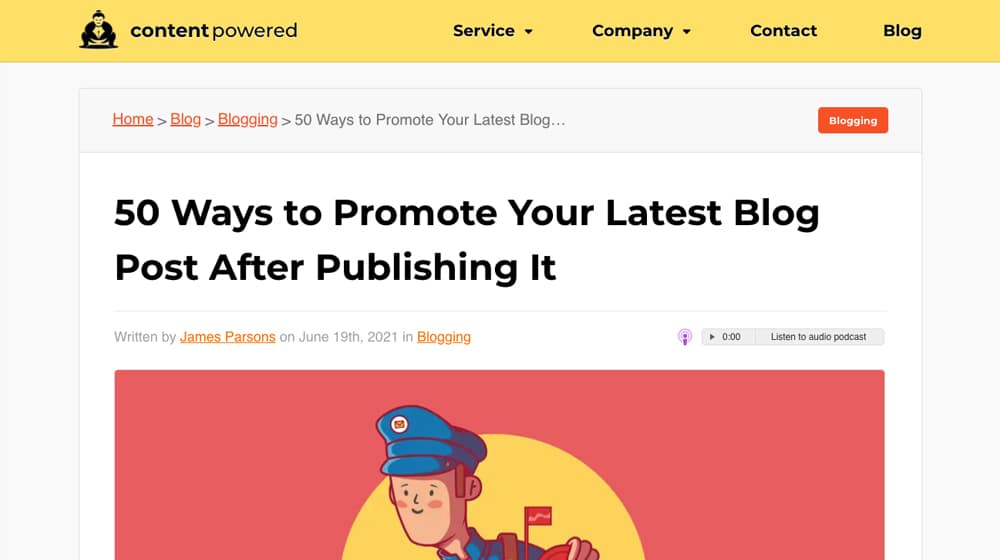
Here's an example of a more article-focused listicle:
This is closer to a typical article, with each section digging into a specific aspect of an overarching subject. It becomes a listicle primarily because it's numbered items in an order.
Here's an example of a clickbait listicle:
Buzzfeed is packed full of these kinds of listicles. In fact, they can be credited with inventing the format, leveraging the curiosity gap and techniques of clickbait to draw people in and make their site the powerhouse it has become. The primary hallmark of a "thin listicle" or a clickbait list is that each list item has a heading, but the actual content of each post is an image.
Buzzfeed's style of listicles is excellent for sharing on Facebook and going viral with memes, but it's abysmal for SEO and marketing. Why? Well, take a look at that post above. How many words is that post?
If you cut out the words in the images (which Google can't index), that post is 200 words long.
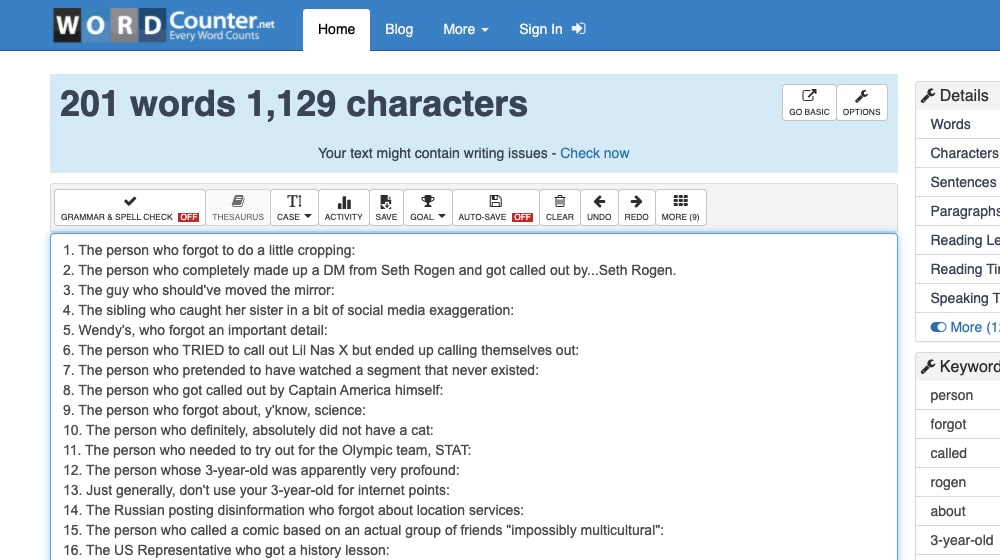
Do you think you could get away with writing a 200-word blog post for your marketing site? Definitely not. At best, that's thin content that will get ignored, and at worst, it can penalize you. You 100% need a site dedicated to the format for the format to work.
Aren't Listicles Penalized by Google and Facebook?
You may have heard at some point that listicles or list articles are penalized, either by Google, by Facebook, by "the algorithm," or just in general. The truth is, they were, but also not really.
Buzzfeed-style listicles with a heavy emphasis on clickbait were penalized, specifically on Facebook with their algorithm. The reason was that they blew up to be so popular, so quickly, that it was all you would ever see on the site for months.
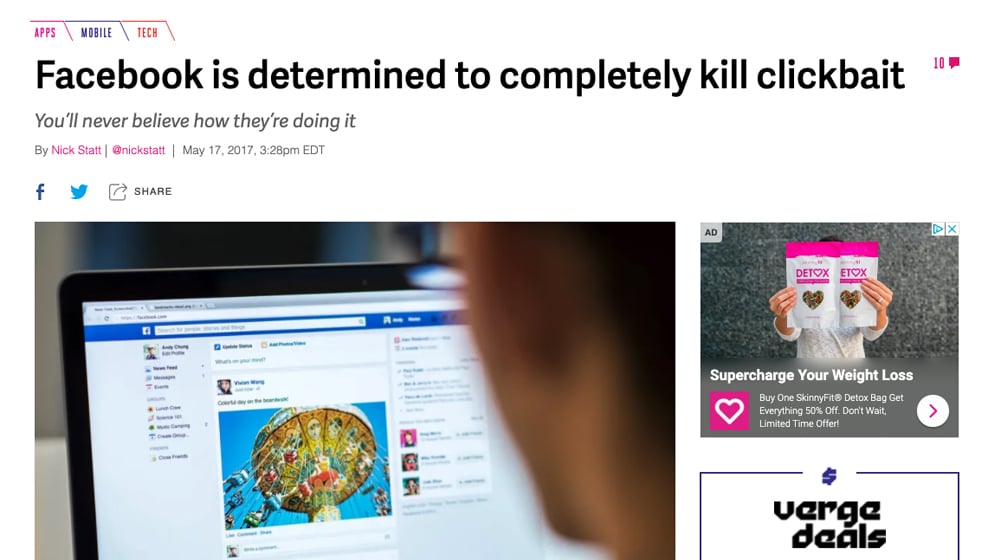
Though, Buzzfeed is still around. What was penalized was thin listicles with heavy clickbait. Like "7 Ways to Clean Your Sink (Number 4 Is Astonishing!)". Even then, it's mostly the parenthetical that does it.
Google never really penalized listicles because they punished thin content, copied content, and valueless content.
Today, of course, listicles are fine so long as you're doing them right. Even a little bit of clickbait can be acceptable.
How Listicles Can Work for You
Listicles are a suitable format for a site, so long as they're robust enough in terms of content that can be indexed and so long as they are relevant and full of value.
Here's an excellent example of a recent, high-quality listicle:
It has a lengthy intro that digs into the topic and tells you why you should care. It lists a ton of tools – 52 of them – in specific categories. It has a defined and logical structure so users can browse to precisely what they want to see. Each item has an associated image (even if it's just a screenshot of their website) and a paragraph or two describing what it is and why it's relevant. And, that's it! But that's all it needs to be.
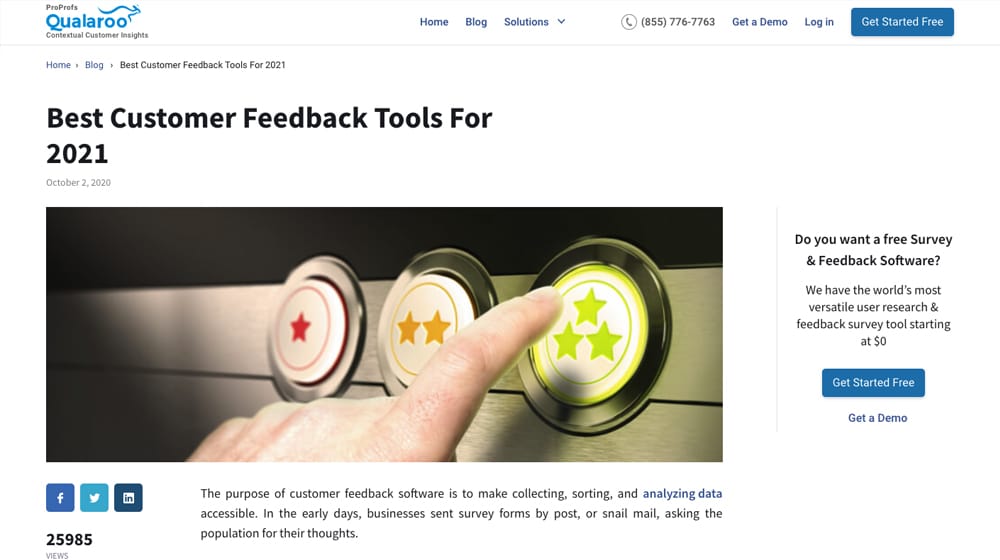
So, what makes a listicle so good?
- They have short, punchy, descriptive titles that tell the reader exactly what they're going to get, often before they even click on the Google search result or the social media link.
- They're formatted in a way that is exceedingly easy to skim to get to the exact information you want, making them a massive victory for fast access to information and usability.
- They can break down a complex topic into easily digestible chunks, which can be parsed in order or consumed at the rate the user wants to see.
- They can be shared and skimmed easily, and if even a single nugget of value triggers the user's satisfaction, they can easily click to share it themselves.
- They're relatively easy to write. Pick a topic, set a number, and fill it out. You can even fluff it up with a little more formatting, like if the Qualaroo article added subsections for URL, Price, or other information to the description. A listicle can easily hit 3,000+ words, depending on the topic and the number chosen. Here's a more advanced listicle I wrote that topped 7,000 words.
- Listicles can target core keywords while still hitting an array of related long-tail keywords. Smaller listicles can target long-tail keywords and feed into larger listicles and topic pillars as well.
- Listicles are easy to update. If an item is removed or changes enough that it doesn't belong on the list, it can easily be removed and a new one put in its place or the list number adjusted. This makes listicles a simple kind of content to keep up to date for search ranking purposes.
And, my favorite: listicles are an easy target for 10x content. If a competitor of yours writes the "top 15 content marketing tools" list, you can quickly write a "top 35 content marketing tools" post and blow theirs out of the water. Even if 15 of your 35 items are the same as their 15, you have more than double the value in the post because of all of the unique items you added.
How Should You Plan and Write a Listicle?
Listicles are an accessible format to write, but they require careful planning and research to create. It's a multi-step process.
1. Do your research into the topic and keyword. Some keywords lend themselves to listicles, and others do not. Sometimes, if you can write a listicle about a complex issue, you can get special attention for the novelty. Other times, it just becomes an exercise in frustration.
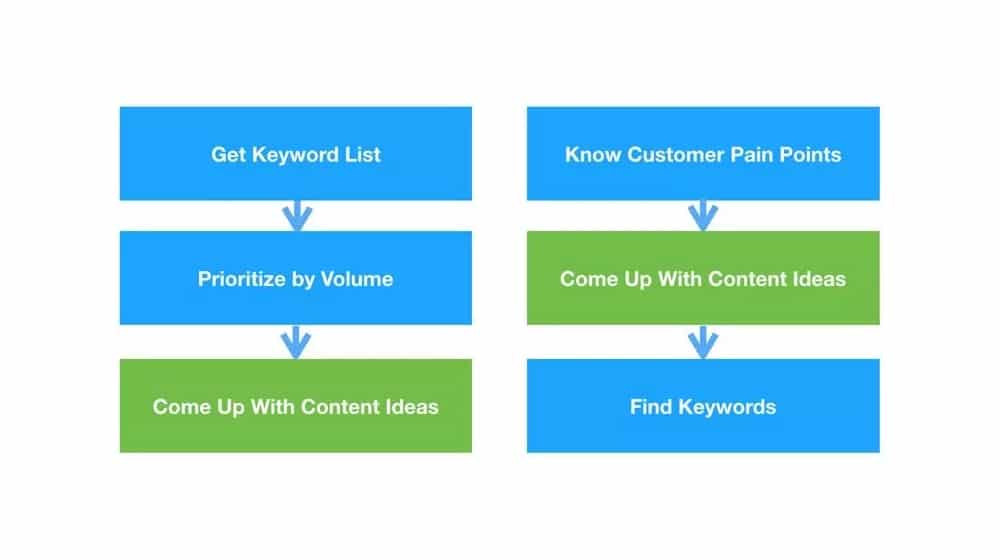
Listicles are great for surface-level topics, mid-level topics, and resources. My listicles tend to be:
- Lists of tools. For example, a list of WordPress plugins to boost your SEO.
- Lists of actionable steps you can take. For example, a list of growth hacks you can take to boost your site ranking.
- Lists of items you want to complete for a task. For example, a checklist of SEO items to monitor.
- Lists of lists. For instance, I could write a list of the top SEO checklists on the web.
Listicles are bad for topics that are deep, complex or require nuance. Every individual item on a listicle has, typically, 50-100 words worth of content. If you can't explain the value of the list item in that amount of space, you're not making a listicle; you're making a resource post.
2. Choose your keywords. You generally want a primary keyword and a list of secondary keywords you'll hit along the way. The SEO example is a good one because "SEO Checklist" is a good starting keyword. Then all of the relevant SEO keywords relating to metadata, content quality, backlinks, and so forth all make good items within the listicle.
Keywords can guide your content, but you don't need to be ruled by them. By that, I mean that you can write items on your list that don't have associated keywords, and that's fine.
3. Search for your competition. Listicles are an excellent format for 10x content, as I mentioned above, but you can't 10x the competition if you're not aware of the competition. Do searches for your keywords and for related keywords to see what comes up. Ideally, you'll either find a wide-open keyword (which is rare) or a bunch of mediocre lists that you can take, merge, add value to, and sculpt into mega-content.
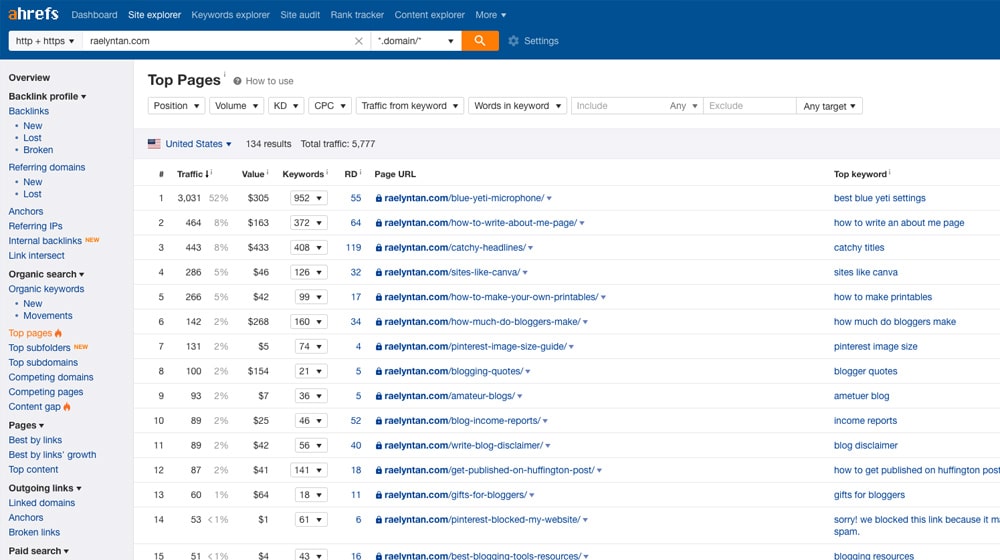
When writing a listicle post, my first step is to open up all the lists in the top 10-20 Google search results. If they're extensive lists, I might make a spreadsheet and paste them to see and remove duplicates more easily. If they're shorter lists, I might go through one after the other, skipping items that are repeated.
At this point, you may also want to look for a unique angle for the topic, especially if the existing competition is fierce. For example, if the space for "SEO Checklist" is packed (which it is), I might look for a unique angle on it, like:
- List of SEO Items to Check Before Launching a New Site
- List of SEO Tips for Product Pages
- Checklist of SEO Tips for Food Blogs
Picking a unique angle, a unique spin, or a unique framing for your listicle can go a long way towards making it more relevant, even if 90% of the content inside it will be the same. SEO for different site types is generally the same, with a few unique tips for specific elements like recipe posts or product descriptions.
4. Determine your formatting. I typically do subheadings for the list items, an image representing the tip or tool, and a paragraph describing its value. For longer lists, I write shorter descriptions. I make each list item stand alone for very long lists and write more robust descriptions for categories. For shorter lists, I might write longer or multiple paragraphs for each item or create categories for information such as pricing, industry/niche, or subject for each.

Formatting is essential because you want every item on your list to be the same. That makes it easier to skim and easier to write.
5. Build your list. Depending on how much of an expert you are on the subject, you may do more or less planning. I often make a spreadsheet of tips, with the ones I can think of, the ones I can find, the ones in other lists on the same topic, and so on. This helps you figure out how long your list will be and thus how much writing each element will require. It also enables you to figure out what kind of formatting you want.
I recommend aiming to make your listicle an odd or unusual number of items. A list with 17 items draws more attention than a list with 20 items usually. If your list is enormous, aiming for 69 or 420 can be great just for the humor factor.
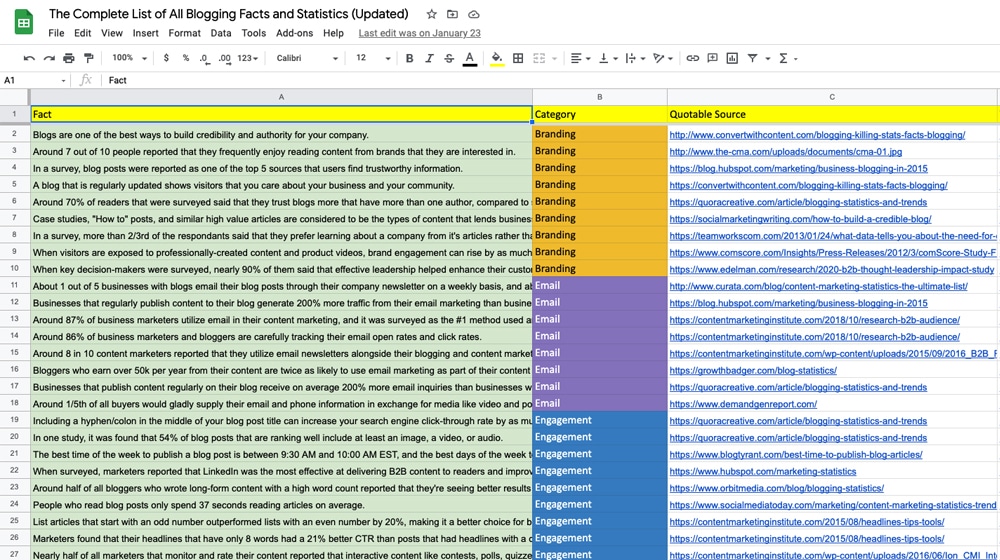
6. Write the list. Doing the actual writing isn't all that difficult, but it's easier if you're an expert in the subject or have easy access to the data necessary to make your points. The more research you need to do, the longer it will take. Don't forget to harvest specific information you might need, like pricing, and take screenshots if you're going to.
7. Add any extra information you want to work into your article. This includes your intro and conclusion, section headings and descriptions, or extras like links to sources, links to other lists, links to other resources you've created, and your calls to action.
That's it! By this point, all you'll have left to do is add the finishing polish, publish, and promote the listicle. I recommend several shares on social media over a few weeks.
2023 Update
In the past year, the world of listicles has been buzzing with some fascinating shifts. In 2022, Google decided to shake things up a bit with the Helpful Content Update. They've started to look beyond the length of your listicle and more into how much value you're truly providing your audience. So, if you thought you could get away with an extensive but shallow list, think again! The spotlight is on richer, in-depth listicles crammed full of well-researched, killer content.
Now, here's something even more exciting: multimedia listicles are having a moment. In a bid to be more engaging and, let's face it, shareable, listicles now come packed with images, infographics, and even video content! This isn't just about looking good - it's about climbing those Google rankings as the Big G gets better at indexing visual content.
In the arena of content marketing strategies, listicles are now heavyweights. They're particularly flexing their muscles in B2B marketing, breaking down hefty topics into easily digestible chunks. And, although Buzzfeed-style clickbait listicles might be seeing a slight drop in popularity (people are hungry for more substance these days), don't be fooled into thinking the era of listicles is over.
If done right, your listicle can still be a potent tool in your SEO arsenal and a hit with your audience.
Further Reading
If you want to dig deeper into this topic, here are a few other resources you can use.
So, there you have it - my addition to the roster of ways to use listicles for marketing. I love them. Do you?



 30 Second Summary
30 Second Summary



August 02, 2021
I was really nervous to have posted a listicle. A friend of mine told me that Google will penalize it since she had issues with these.
Glad I was able to read this! Thank you so much!
August 03, 2021
Hi Sharon, you're welcome! You should be shooting for long-form content whenever possible, even in listicles. I wouldn't worry about a penalty as long as it is high-quality, unique content.
September 23, 2023
Nice article! Really well detailed and made it easy to understand about listicles!
September 26, 2023
Thanks John! Cheers.